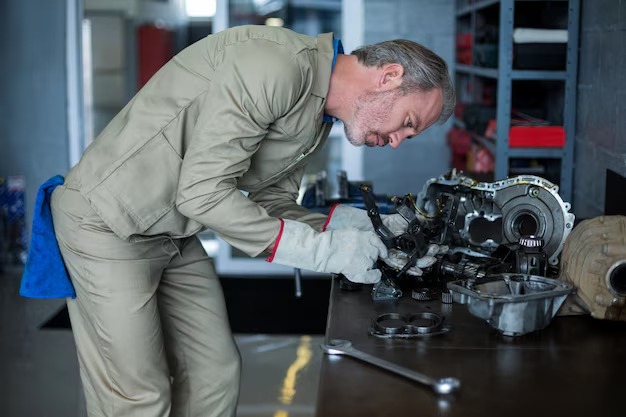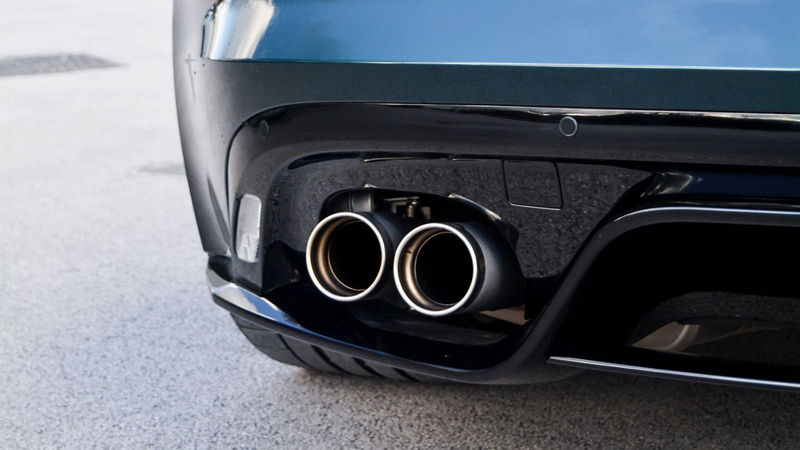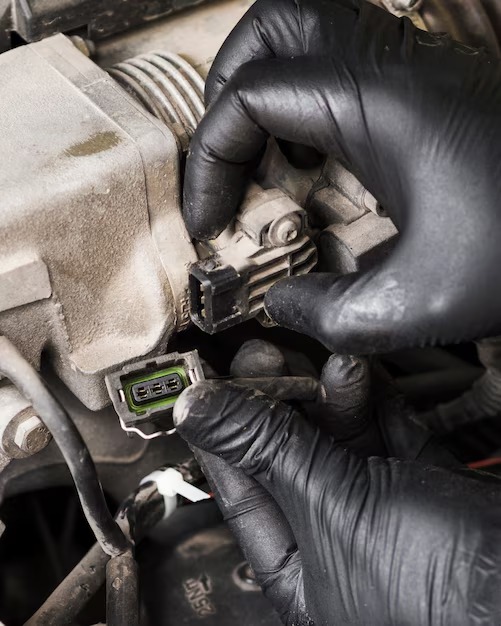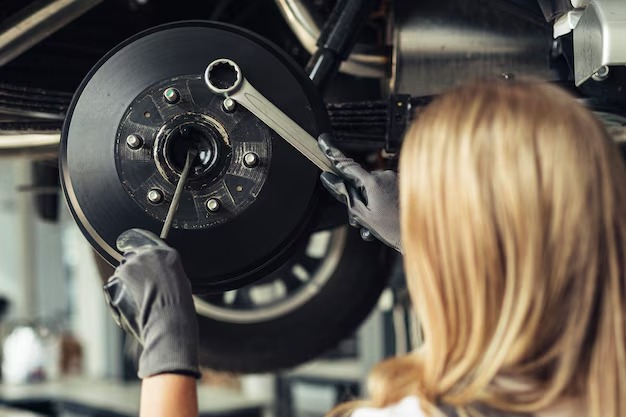Tips for Restoring Faded Car Paint
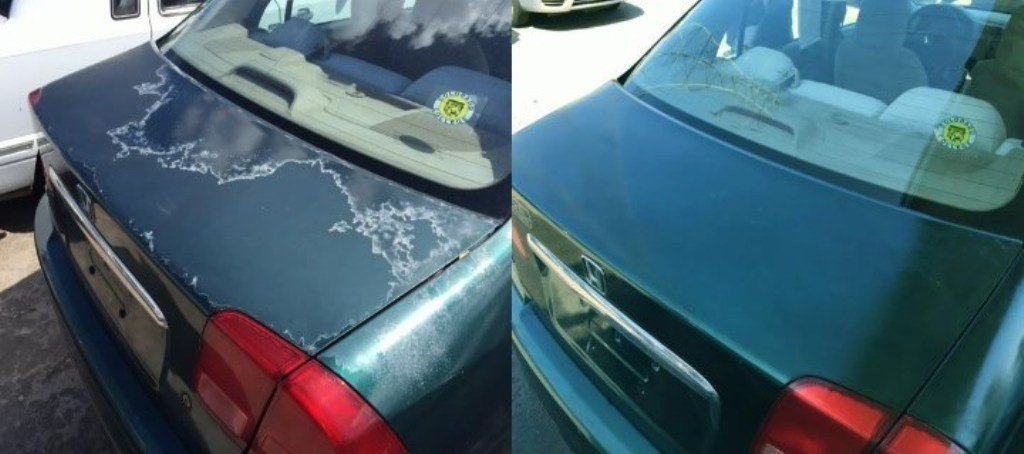
Faded car paint can be a real eyesore, diminishing the overall appearance and value of your vehicle. Exposure to sunlight, harsh weather conditions, and environmental pollutants can all contribute to the fading of car paint. However, restoring faded car paint doesn’t have to be a daunting task. With the right products and techniques, you can bring back the shine and vibrancy to your vehicle’s paintwork.
One of the first steps in restoring faded car paint is to thoroughly wash and dry the vehicle. This will help remove any dirt, dust, or surface contaminants that may be contributing to the fading. Once the car is clean, it’s important to assess the extent of the fading. This will help determine the best approach for restoration.
For minor fading, a simple polish or wax may be enough to restore the paint’s shine and clarity. A polishing compound can help remove light scratches and swirl marks, while a wax or sealant can provide protection and enhance the paint’s gloss. It’s important to choose products specifically designed for automotive use and follow the manufacturer’s instructions for best results.
If the fading is more severe, a paint restoration process may be necessary. This typically involves using an abrasive compound to remove a thin layer of the clear coat and expose fresh paint. It’s important to note that this process should only be undertaken by experienced individuals, as it can be easy to damage the paint if not done correctly. After the paint restoration, applying a clear coat or sealant can help protect the newly restored paint and prevent future fading.
In conclusion, restoring faded car paint is a task that requires time, patience, and the right products. With proper care and maintenance, you can keep your car’s paint looking vibrant and ensure your vehicle always makes a lasting impression.
Tips for Restoring Faded Car Paint
If you are noticing that the paint on your car has started to fade, it can be a frustrating sight. However, there are some steps you can take to restore the appearance of your car’s paint and bring back its shine. Here are some helpful tips for restoring faded car paint:
| 1. Wash and dry your car thoroughly:
Start by giving your car a thorough wash using a car shampoo and water. Pay special attention to any areas with heavy dirt or grime. After washing, dry your car completely to ensure that there is no water remaining on the surface. |
| 2. Use a clay bar:
A clay bar can be an effective tool for removing surface contaminants from your car’s paint, such as tar, bugs, or tree sap. Gently rub the clay bar over the surface of the paint, following the instructions provided. |
| 3. Apply a cutting compound:
A cutting compound can help to remove light scratches and oxidation from the surface of the paint. Apply a small amount of the compound to a clean, dry cloth and gently rub it in a circular motion on the affected areas. Buff the paint with a clean cloth to remove any excess compound. |
| 4. Use a polish:
After using a cutting compound, apply a polish to enhance the shine of your car’s paint. Choose a polish that is specifically designed for automotive use. Apply it to the paint using a clean, dry cloth and buff it to a high shine. |
| 5. Apply a protective wax:
To protect the restored paint and help maintain its appearance, apply a layer of protective wax. Waxing your car regularly can help to prevent fading and provide a barrier against environmental contaminants. |
| 6. Maintain regular washing and waxing:
To keep your car’s paint looking its best, it’s important to maintain a regular cleaning and waxing routine. Wash your car regularly using a car shampoo and apply wax every few months to protect the paint from fading. |
By following these tips, you can restore the appearance of your car’s faded paint and enjoy a shiny, vibrant finish once again. Remember to always use car-specific products and follow the instructions provided for the best results.
Identifying Faded Paint
Over time, car paint can fade due to various factors such as exposure to the sun, harsh environmental conditions, or improper maintenance. Faded paint is characterized by a loss of color saturation, dullness, and the presence of visible swirl marks or scratches.
To identify faded paint, start by examining the overall appearance of your car’s paintwork. Look for areas that appear lighter or less vibrant compared to the original color. Faded paint may also have a chalky or powdery texture when you touch it.
Color Fading
Faded paint can manifest in different ways depending on the color of the original paint. For example, red and yellow paints tend to fade more prominently compared to darker colors like black or navy blue. Examine the color intensity of your car’s paint to determine if it has faded significantly.
Swirl Marks and Scratches
Faded paint often becomes more noticeable when there are swirl marks or scratches on the surface. These imperfections reflect light differently and make the faded areas stand out even more. Carefully inspect your car’s paint for any visible marks that could contribute to the overall faded appearance.
If you’re unsure whether your car’s paint has faded or if it’s just dirty, try washing and waxing the vehicle to see if the color is restored. If the paint remains dull and lackluster even after cleaning, it’s likely that you’re dealing with faded paint.
Cleaning and Preparing the Surface
Before you begin restoring faded car paint, it’s important to thoroughly clean and prepare the surface. This will help ensure that any product you apply adheres properly and produces the best results.
Gather the Right Tools and Materials
First, gather all the necessary tools and materials for the job. This may include:
- Car wash soap
- Microfiber towels
- Car clay bar
- Polishing compound
- Polishing pad or applicator
- Wax or sealant
Having these items on hand will make the cleaning and preparation process much easier.
Wash the Car Thoroughly
Start by washing the car thoroughly using car wash soap and water. Use a microfiber towel or soft sponge to gently scrub the surface, paying extra attention to areas with visible dirt or grime. Rinse off the soap with clean water and dry the car with a microfiber towel.
Remove Contaminants with a Clay Bar
Once the car is clean and dry, use a clay bar to remove any contaminants that may be stuck on the surface, such as tree sap, road tar, or industrial fallout. Take a small piece of the clay bar and knead it until it becomes soft and pliable. Spray a lubricant, such as a quick detailer or clay bar lubricant, onto a small area of the car’s surface, then gently rub the clay bar over that area in straight lines. The clay bar will pick up any contaminants, leaving the surface smooth and ready for the next step.
Apply Polishing Compound
Next, apply a polishing compound to remove any oxidation or light scratches on the paint surface. Make sure to choose a compound that is specifically designed for automotive use. Apply a small amount of the compound to a polishing pad or applicator, then work it into the paint using circular motions. Continue working in small sections until the entire car has been covered.
Note: Before applying the polishing compound, be sure to test it on a small, inconspicuous area of the car to ensure it doesn’t damage the paint.
Finish with Wax or Sealant
Finally, finish the cleaning and preparation process by applying a layer of wax or sealant to protect the paint and enhance its shine. Follow the instructions on the product packaging for best results, and make sure to apply the wax or sealant using a clean, lint-free cloth or applicator.
By properly cleaning and preparing the surface of your car, you’ll create the optimal foundation for restoring faded paint and achieving a beautiful finish.
Sanding the Paint
Before applying any paint restoration products, it’s important to properly prepare the surface of the car by sanding the faded paint. Sanding helps to remove any imperfections and creates a smooth surface for the new paint to adhere to.
To sand the paint, you will need the following materials:
- Sandpaper (grit varies depending on the severity of the fading)
- Sanding block or sanding sponge
- Water and a bucket
- Clean microfiber cloth
- Masking tape
Start by washing the car to remove any dirt or debris on the surface. Once the car is clean, fill a bucket with water and soak the sandpaper in it for a few minutes. This helps to lubricate the sandpaper and prevent it from scratching the paint.
Step 1: Choose the Right Grit
The grit of the sandpaper you choose will depend on the severity of the fading. If the paint is only slightly faded, you can start with a finer grit, such as 1000-1500. For more severe fading, you may need to start with a coarser grit, such as 800-1000. Gradually move to finer grits as you sand to achieve a smooth finish.
Step 2: Sand in a Crosshatch Pattern
Using the sanding block or sanding sponge, start sanding the faded paint in a crosshatch pattern. This means sanding in vertical and horizontal strokes, overlapping each stroke slightly. This helps to ensure that you sand the entire surface evenly and avoid creating any grooves or uneven spots.
Remember to apply light pressure while sanding and keep the surface wet with water to prevent the paint from overheating. If you notice the sandpaper getting clogged with paint residue, rinse it with water and continue.
Step 3: Check the Surface
After sanding a small section of the car, use a clean microfiber cloth to wipe off the residue and check the surface. Look for any areas that still have faded paint or imperfections. If needed, continue sanding those areas until you achieve a smooth and consistent surface.
Note: Be careful not to sand too much or too aggressively, as this can damage the underlying layers of paint or the car’s surface.
Once you’re satisfied with the sanded surface, use masking tape to protect any areas that you don’t want to paint. This includes trim, windows, and other parts that should not come into contact with the paint.
Now that the paint is properly sanded, you are ready to proceed with the next step in restoring your faded car paint.
Applying a Paint Restorer
Once you have prepared your car’s surface for restoration, it is time to apply a paint restorer. A paint restorer is a product specifically designed to rejuvenate faded or oxidized paint and bring back its original shine and color.
When choosing a paint restorer, it is important to consider the type of paint on your car. Different products are tailored for different paint finishes, such as clear coat, single-stage, or metallic. It is recommended to consult your car’s manufacturer or a professional to determine the best paint restorer for your vehicle.
Step 1: Clean the Surface
Before applying the paint restorer, make sure the surface is clean and free from dirt, dust, and other contaminants. Wash your car thoroughly using a gentle car wash soap and a microfiber cloth or sponge. Rinse off any soap residue and allow the surface to dry completely.
Step 2: Apply the Paint Restorer
Follow the instructions provided with the paint restorer product. In general, you will apply the product using a clean microfiber applicator pad or a foam pad. Start by applying a small amount of the paint restorer onto the pad and then spread it evenly over a small section of the car’s surface using circular or back-and-forth motions.
Work in small sections at a time to ensure thorough coverage and prevent the product from drying too quickly. Allow the paint restorer to sit on the surface for the specified amount of time recommended by the manufacturer.
Step 3: Buff and Polish
After the paint restorer has had sufficient time to work, use a clean microfiber cloth or a buffing machine to gently buff and polish the treated area. The buffing motion should be light and smooth to avoid causing any damage to the paint.
Buff until the paint restorer is completely removed and the surface appears smooth and glossy. Inspect the restored area to ensure that it matches the surrounding paint. If necessary, repeat the process in any remaining faded or oxidized areas.
Note: It is always a good idea to test the paint restorer on a small, inconspicuous area of your car’s paintwork before applying it to the entire vehicle. This will allow you to assess the product’s compatibility and effectiveness on your particular paint finish.
By following these steps and using a suitable paint restorer, you can effectively restore the faded paint on your car, rejuvenate its appearance, and protect it from further damage.
Buffing and Polishing the Paint
After washing and claying the car, the next step in restoring faded car paint is buffing and polishing. This process is essential to remove any light scratches, swirl marks, or other imperfections on the paint surface.
First, you will need to choose a suitable buffing compound based on the condition of your car’s paint. There are various types available, ranging from mild to aggressive. If the paint is heavily faded or has deep scratches, you may need to use a more aggressive compound. However, it’s important to start with a mild compound to minimize the risk of damaging the paint.
Tools and Equipment
To buff and polish the paint, you will need the following tools and equipment:
- A rotary or dual-action polisher
- Buffing pads of different types (wool, foam, or microfiber) and sizes (3 to 6 inches)
- Buffing compound (mild, medium, or aggressive)
- Polishing compound
- Microfiber towels
- Masking tape
Tip: Make sure the surface and tools are clean and free from any dirt or debris before starting the buffing and polishing process.
Steps to Buff and Polish the Paint
Follow these steps to buff and polish the paint:
- Tape off any areas that you don’t want to accidentally buff or polish, such as trims or rubber seals.
- Apply a small amount of buffing compound onto the buffing pad.
- Spread the compound evenly on the paint surface using the polisher at a low speed.
- Gradually increase the speed of the polisher and work in small sections, applying light to medium pressure.
- Move the polisher in back-and-forth or circular motions, overlapping each pass to ensure complete coverage.
- Continue buffing until the surface becomes smooth and the imperfections are removed.
- Clean the paint surface with a microfiber towel to remove any residue from the compound.
- Switch to a polishing compound and apply it onto a clean buffing pad.
- Repeat the buffing process with the polishing compound to enhance the shine and further refine the paint surface.
- Clean the paint surface again with a microfiber towel to remove any residue from the polishing compound.
Note: It’s important to buff and polish the paint in a well-ventilated area and avoid working under direct sunlight to prevent the compound from drying too quickly.
By buffing and polishing the paint, you can restore its original shine and luster, giving your car a fresh and rejuvenated appearance.
Applying a Clear Coat
Once you have finished applying the base coat and allowing it to dry, it’s time to apply a clear coat to protect the newly restored paint. The clear coat acts as a protective layer, shielding the paint from UV rays, water, and other environmental factors that can cause fading and damage.
Before applying the clear coat, make sure the surface is clean and free of any dust or debris. Use a microfiber cloth or a soft brush to remove any dirt or particles that may have settled on the paint.
Next, shake the can of clear coat spray paint well to ensure the product is thoroughly mixed. Hold the can about 8-10 inches away from the surface of the car and apply a light, even coat. It’s important to spray in a sweeping motion, moving from side to side, to prevent drips or uneven coverage.
Allow the first coat to dry for the recommended time specified on the product label. This usually takes about 15-30 minutes, but it’s important to follow the instructions provided by the manufacturer. Once the first coat is dry, repeat the process and apply a second coat of clear coat in the same manner.
After applying the second coat, allow the clear coat to dry completely. This typically takes about 24 hours, but again, refer to the product label for specific drying times.
Once the clear coat is dry, inspect the paint for any imperfections or areas that may need further touch-up. If necessary, lightly sand any rough spots or drips and then reapply a thin layer of clear coat to ensure a smooth, even finish.
| Tips for Applying a Clear Coat: |
|---|
| Protect yourself by wearing safety goggles and a mask to avoid inhaling fumes or getting paint in your eyes. |
| Work in a well-ventilated area to avoid excessive fumes. |
| Consider using a clear coat with UV protection to further shield the paint from fading. |
| Apply multiple thin coats of clear coat rather than one thick coat to achieve a smoother, more durable finish. |
| Avoid applying the clear coat in direct sunlight or high humidity, as this can affect the drying process. |
By following these steps and properly applying a clear coat, you can restore the faded paint on your car and protect it for years to come. Remember to always read and follow the instructions provided by the manufacturer for best results.
Protecting the Newly Restored Paint
Once you have successfully restored the faded paint on your car, it is important to take steps to protect it and ensure its longevity. Here are some tips to help you protect the newly restored paint:
1. Regular Washing:
Regularly washing your car helps to remove dirt, dust, and debris that can settle on the surface of the paint and cause damage over time. Use a gentle car wash soap and a soft sponge or microfiber cloth to avoid scratching the paint. Avoid using harsh chemicals or abrasive scrubbers as they can strip away the protective layers.
2. Waxing:
Waxing your car provides an extra layer of protection for the paint. The wax acts as a barrier between the paint and environmental elements such as UV rays, acid rain, and bird droppings. Apply a high-quality car wax to the clean, dry surface of the paint using a soft cloth or applicator pad. Follow the instructions on the wax product for best results.
3. Avoid Sun Exposure:
Prolonged exposure to the sun’s UV rays can cause the paint to fade and deteriorate over time. Whenever possible, park your car in a shaded area or use a car cover to protect it from direct sunlight. This will help to preserve the vibrancy of the restored paint for longer.
4. Regular Maintenance:
Regularly inspect your car’s paint for any signs of damage or wear. Touch up any scratches or chips using a matching touch-up paint or seek professional assistance if needed. By addressing minor issues promptly, you can prevent them from becoming bigger problems in the future.
By following these tips, you can protect the newly restored paint on your car and maintain its appearance for years to come. Remember to always use gentle cleaning methods and high-quality protective products to ensure the best results.
Regular Maintenance and Care
Proper maintenance and care can help prevent car paint from fading and keep it looking vibrant for years to come. Here are some tips to consider:
1. Wash Your Car Regularly
Regular car washes are essential in maintaining the overall appearance of your vehicle’s paint job. Washing your car removes dirt, grime, and other contaminants that can cause the paint to fade over time. Use a mild car shampoo, a soft sponge or microfiber cloth, and plenty of water to gently clean the surface of your car.
2. Keep Your Car Protected
Protecting your car from the sun’s harmful UV rays is crucial in preventing paint fading. Whenever possible, park your car in shaded areas or use a car cover to shield it from direct sunlight. This will help minimize the damage caused by UV radiation.
3. Wax Your Car Regularly
Waxing your car provides an additional layer of protection against fading. It creates a barrier between the paint and external elements, such as dirt, pollution, and UV rays. Apply wax to your car’s surface at least every three months to keep the paint looking glossy and vibrant.
4. Avoid Harsh Chemicals
When washing or detailing your car, avoid using harsh chemicals that can strip away the protective layer of wax. Opt for gentle car cleaning products that are specifically designed for automotive use. Harsh chemicals can accelerate paint fading and damage the clear coat.
5. Maintain a Clear Coat
The clear coat is a transparent layer that protects the underlying paint from fading. It is important to regularly inspect the condition of the clear coat and address any damage promptly. If you notice signs of peeling or cracking, consider applying a fresh coat of clear coat to preserve the integrity of the paint.
By following these regular maintenance and care tips, you can extend the lifespan of your car’s paint and keep it looking vibrant and fade-free for years to come.
Question-Answer:, How to fix faded car paint
What causes car paint to fade?
Car paint can fade due to a variety of factors, including exposure to sunlight, harsh weather conditions, chemicals, pollution, and improper maintenance.
How can I tell if my car paint is faded?
You can tell if your car paint is faded by looking for signs such as a dull or chalky appearance, uneven color, or a lack of shine and luster.
Can faded car paint be restored?
Yes, faded car paint can be restored. There are several methods that can be used to restore faded car paint, such as compounding, polishing, waxing, and using paint sealants. The method used will depend on the severity of the fading and the condition of the paint.
Can I restore faded car paint myself?
Yes, it is possible to restore faded car paint yourself. However, it requires time, patience, and the right tools and products. It is also important to follow the proper steps and techniques to ensure the best results.
What are some tips for restoring faded car paint?
Some tips for restoring faded car paint include washing and drying the car thoroughly before starting, using a high-quality compound or polish, following a consistent and even application technique, and finishing with a protective wax or sealant to maintain the restored paint.


